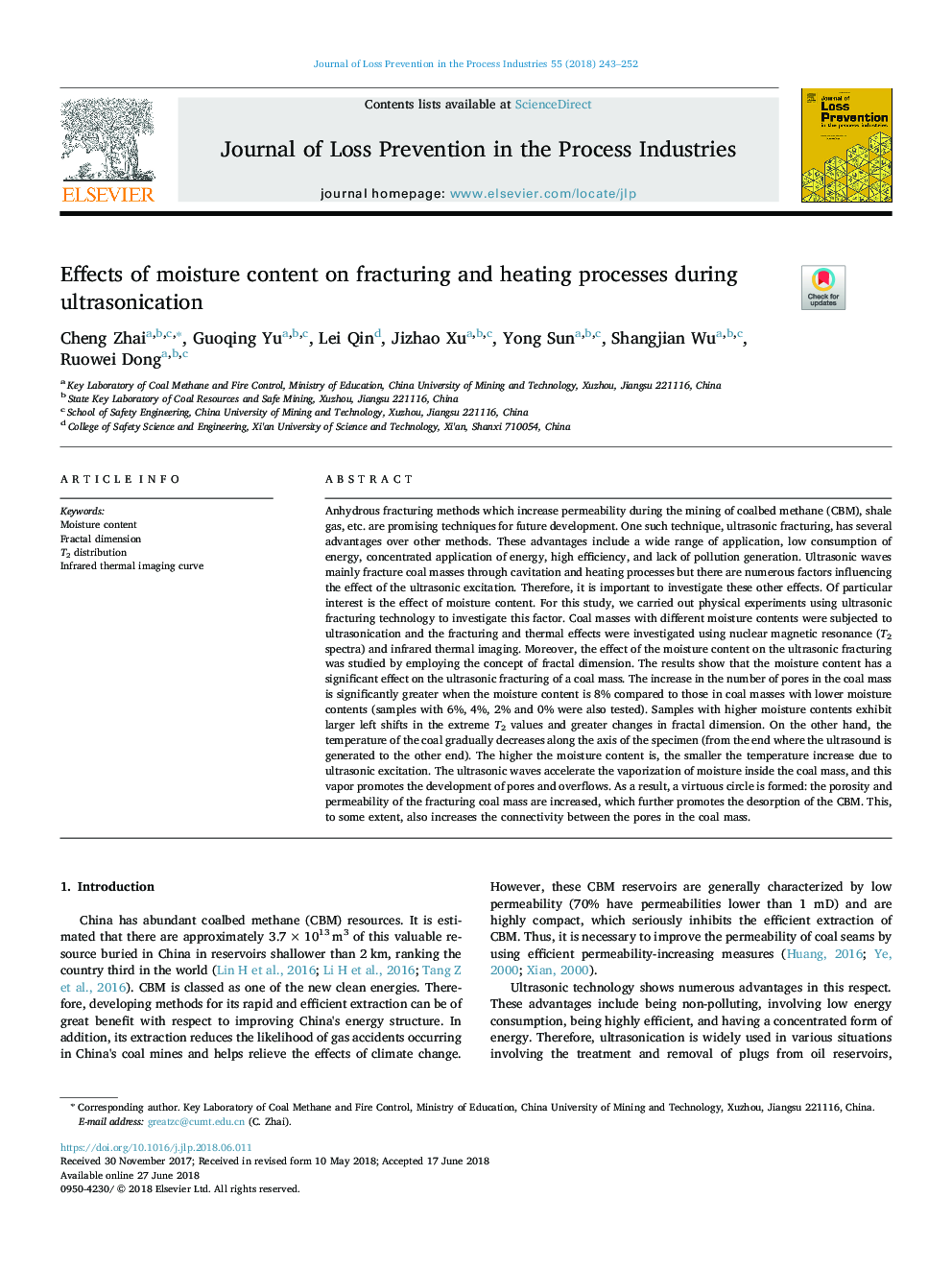| Article ID | Journal | Published Year | Pages | File Type |
|---|---|---|---|---|
| 6972786 | Journal of Loss Prevention in the Process Industries | 2018 | 10 Pages |
Abstract
Anhydrous fracturing methods which increase permeability during the mining of coalbed methane (CBM), shale gas, etc. are promising techniques for future development. One such technique, ultrasonic fracturing, has several advantages over other methods. These advantages include a wide range of application, low consumption of energy, concentrated application of energy, high efficiency, and lack of pollution generation. Ultrasonic waves mainly fracture coal masses through cavitation and heating processes but there are numerous factors influencing the effect of the ultrasonic excitation. Therefore, it is important to investigate these other effects. Of particular interest is the effect of moisture content. For this study, we carried out physical experiments using ultrasonic fracturing technology to investigate this factor. Coal masses with different moisture contents were subjected to ultrasonication and the fracturing and thermal effects were investigated using nuclear magnetic resonance (T2 spectra) and infrared thermal imaging. Moreover, the effect of the moisture content on the ultrasonic fracturing was studied by employing the concept of fractal dimension. The results show that the moisture content has a significant effect on the ultrasonic fracturing of a coal mass. The increase in the number of pores in the coal mass is significantly greater when the moisture content is 8% compared to those in coal masses with lower moisture contents (samples with 6%, 4%, 2% and 0% were also tested). Samples with higher moisture contents exhibit larger left shifts in the extreme T2 values and greater changes in fractal dimension. On the other hand, the temperature of the coal gradually decreases along the axis of the specimen (from the end where the ultrasound is generated to the other end). The higher the moisture content is, the smaller the temperature increase due to ultrasonic excitation. The ultrasonic waves accelerate the vaporization of moisture inside the coal mass, and this vapor promotes the development of pores and overflows. As a result, a virtuous circle is formed: the porosity and permeability of the fracturing coal mass are increased, which further promotes the desorption of the CBM. This, to some extent, also increases the connectivity between the pores in the coal mass.
Related Topics
Physical Sciences and Engineering
Chemical Engineering
Chemical Health and Safety
Authors
Cheng Zhai, Guoqing Yu, Lei Qin, Jizhao Xu, Yong Sun, Shangjian Wu, Ruowei Dong,
